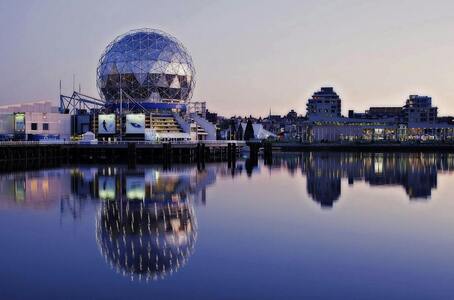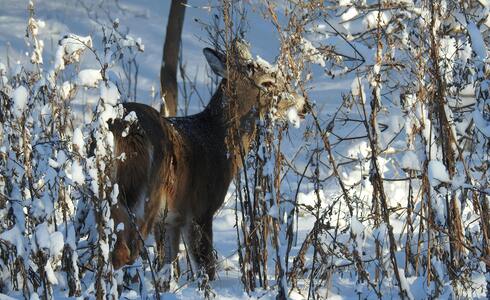Spanning nearly 10 million square kilometers, Canada’s sheer size and diversity can make planning a cross-country journey feel like assembling a complex jigsaw puzzle. Many travelers find themselves skipping essential experiences simply because they don’t know how to fit them into a realistic itinerary.

While Vancouver’s mountain vistas call from one coast and Nova Scotia’s maritime charm beckons from the other, the vast
expanse between holds countless treasures waiting to be discovered.
The secret to unlocking Canada’s true potential lies in understanding how its distinct regions flow together naturally, like threads in a tapestry.
Let’s explore how to weave together Canada’s magnificent landscapes and vibrant
cultures into your own unforgettable coast-to-coast adventure.
The Maritime Charm of the East Coast
The journey often begins in Nova Scotia, where Halifax serves as the perfect introduction to Maritime culture. The city’s historic waterfront buzzes with activity, while nearby Peggy’s Cove offers those iconic lighthouse views that grace so many postcards.
Moving northward, Cape Breton Island’s Cabot Trail winds through highlands reminiscent of Scottish landscapes.
Prince Edward Island might be Canada’s smallest province, but it punches well above its weight in charm. Red sand beaches and rolling farmland create a pastoral scene that inspired Lucy Maud Montgomery’s Anne of Green Gables. The island’s seafood scene, particularly its legendary lobster suppers, provides delicious reasons to linger.
Quebec’s European Flair
Crossing into Quebec feels like entering another world. Quebec City’s walled old town transports visitors to a slice of Europe, complete with cobblestone streets and centuries-old architecture.
Here, winter’s Carnival transforms the city into a magical wonderland, while summer brings outdoor cafes and street performers to life. Montreal adds its own distinct flavor to the journey.
The city masterfully blends French heritage with modern North American energy. Mount Royal Park offers sweeping city views, while the historic Plateau neighborhood invites exploration of local markets and
bistros.
Ontario’s Urban Energy and Natural Beauty
Toronto embodies Canada’s multicultural spirit, evident in neighborhoods like Kensington Market and vibrant Chinatown. The city’s skyline, punctuated by the CN Tower, creates an impressive urban landscape. Just a short drive away, Niagara Falls reminds visitors of nature’s raw power.
Further north, Algonquin Provincial Park showcases Ontario’s wilderness. Fall colors here rank among North America’s most spectacular displays, while summer offers exceptional canoeing and wildlife viewing opportunities.
Prairie Horizons
The prairies often surprise visitors with their subtle beauty. Winnipeg’s Canadian Museum for Human Rights provides powerful insights into social justice movements, while the city’s Exchange District preserves some of North America’s finest turn-of-the-century architecture.
Saskatchewan’s Grasslands National Park offers unexpected adventures. Here, dark sky preserves provide stellar stargazing opportunities, while buffalo herds roam freely across native prairie grasslands.
Rocky Mountain Majesty

Alberta’s mountain parks form the backbone of many Canadian tours. Banff National Park deserves its reputation as a natural wonder, though. timing visits around peak seasons helps avoid the largest crowds.
Lesser-known Jasper National Park offers equally stunning mountain scenery with smaller crowds.
Some essential Rocky Mountain experiences:
- Early morning visits to Lake Louise before tour buses arrive
- Wildlife watching along the Ice fields Parkway
- Soaking in Banff’s historic hot springs
- Hiking to the Lake Agnes Tea House
If you want to explore all these majestic mountains, pristine lakes and diverse wildlife, we would recommend you to take Canadian Rockies tours. They will take care of everything, and you can enjoy your travel and get the most out of it.
Pacific Coast Finale
Vancouver marks a fitting end to a cross-country journey. The city’s setting between mountains and ocean creates endless opportunities for outdoor adventures within minutes of downtown. Stanley Park’s seawall provides perfect views of both natural and urban landscapes.
Vancouver Island adds yet another dimension to the Pacific experience. Victoria’s British colonial architecture and gardens contrast with Tofino’s wild Pacific beaches and rain forests.
Seasonal Considerations
Canada’s weather patterns significantly influence travel experiences:
- Summer (June-August): Peak season with warmest weather and longest daylight hours. Ideal for outdoor activities but requires advance planning for accommodations.
- Fall (September-October): Excellent for viewing fall colors and enjoying mild temperatures. Wildlife viewing opportunities improve as animals prepare for winter.
- Winter (November-March): Perfect for snow sports and winter festivals. Cities like Quebec City and Ottawa embrace the season with unique events.
- Spring (April-May): Shoulder season with fewer crowds and spring wildflowers.Some mountain areas remain snow-covered until June.
Regional Cuisine Worth Seeking
Each region brings its own flavors to Canada’s culinary landscape:
- Maritime lobster and fresh seafood
- Montreal-style bagels and smoked meat
- Prairie pierogies and bison
- West Coast salmon and sushi
Wrapping Up
A coast-to-coast journey through Canada reveals more than just stunning landscapes – it tells the story of a country through its people, cultures, and natural wonders. While this guide provides a framework, the most memorable experiences often come from unexpected discoveries along the way. Keep in mind, it’s not about seeing everything, but rather creating meaningful connections with each place you visit.
Nancy White